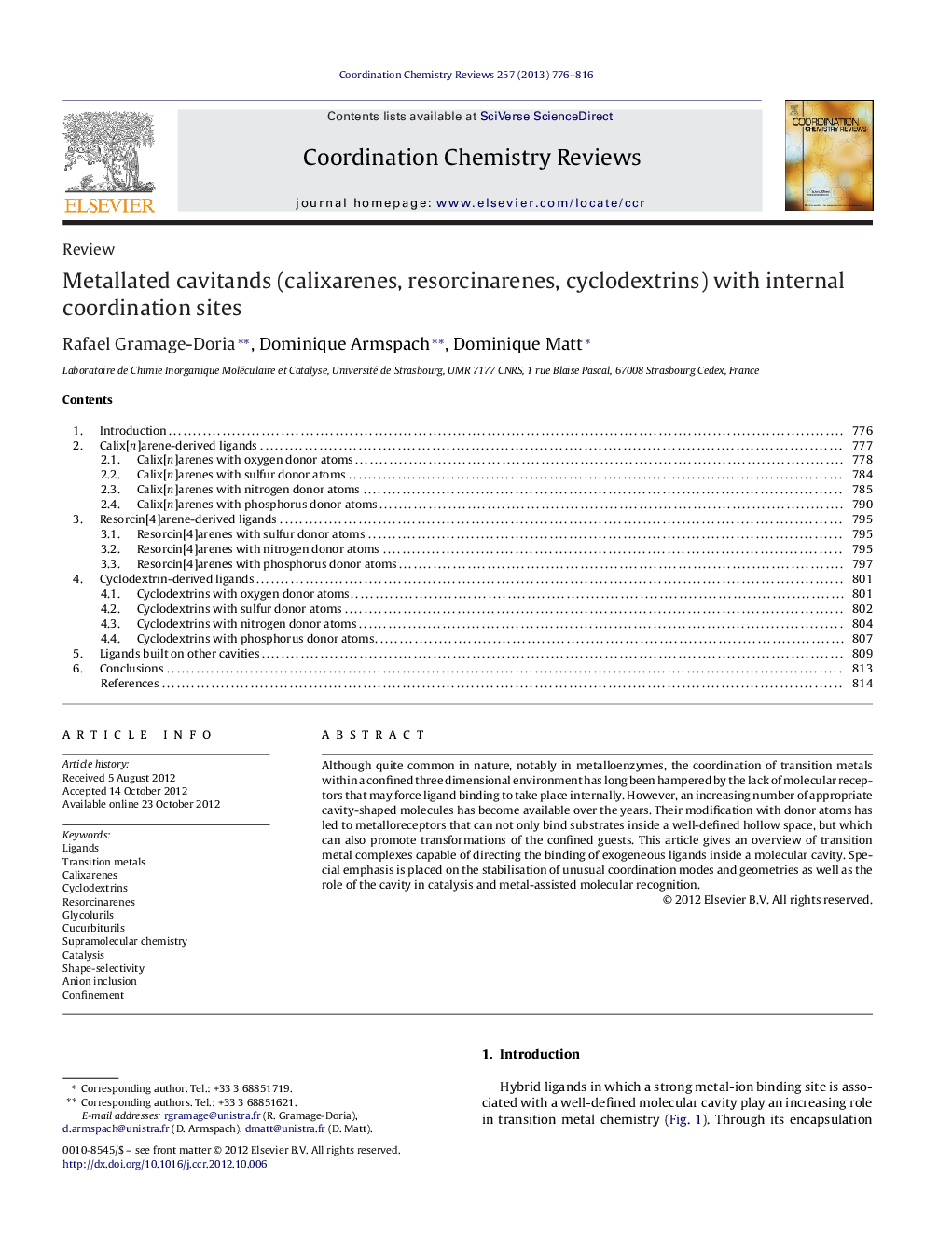| Article ID | Journal | Published Year | Pages | File Type |
|---|---|---|---|---|
| 1300422 | Coordination Chemistry Reviews | 2013 | 41 Pages |
Although quite common in nature, notably in metalloenzymes, the coordination of transition metals within a confined three dimensional environment has long been hampered by the lack of molecular receptors that may force ligand binding to take place internally. However, an increasing number of appropriate cavity-shaped molecules has become available over the years. Their modification with donor atoms has led to metalloreceptors that can not only bind substrates inside a well-defined hollow space, but which can also promote transformations of the confined guests. This article gives an overview of transition metal complexes capable of directing the binding of exogeneous ligands inside a molecular cavity. Special emphasis is placed on the stabilisation of unusual coordination modes and geometries as well as the role of the cavity in catalysis and metal-assisted molecular recognition.
► Cavity-shaped ligands with endo-oriented donor atoms are suitable for controlling the 1st and 2nd coordination spheres of a metal centre. ► Metallo-cavitands are useful tools in molecular recognition, supramolecular catalysis, and shape-selective catalysis. ► The combination of a molecular cavity and a covalently-linked metal centre may trigger unusual molecular dynamics.
